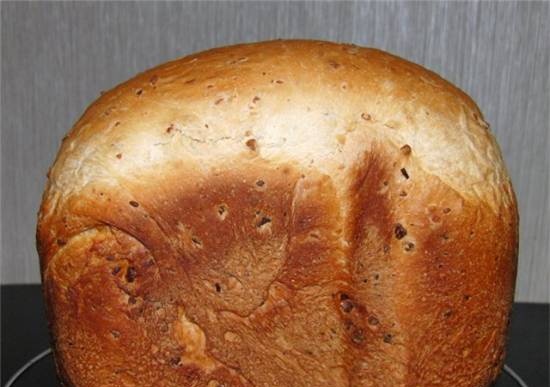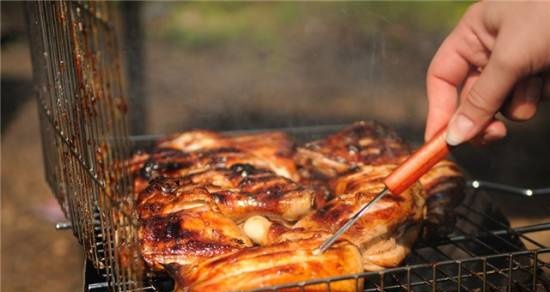Despite the tantrum caused by nutritionists in the late 60s about the harmfulness of sugar, this product still has not disappeared from our diet.Rather, we should talk about sugars, since there are several of them. We will try to find out where these such pleasant substances are contained, and how real the fight against them is. By the way, is any sugar really that bad? After all, they are used in sports nutrition, and not without success. Let's figure it out ...
The family of sugars, or "simple carbohydrates" as they are often called, include glucose, fructose, sucrose (table sugar), lactose (milk sugar), maltose (malt sugar), stachyose (found in legumes), galactose, and trehalose ( mushroom sugar). Of these, the first four are directly nutritional.
Stachyose and trehalose are mostly known to be sources of gastrointestinal distress in those whose bodies are unable to handle these substances. Therefore, it makes sense for us to dwell in detail on those sugars that we come across closely.
As you know, carbohydrates are the main source of energy in muscles. For the formation of muscle "fuel" - glycogen - it is necessary to enter the body of glucose due to the breakdown of carbohydrates from food. Further, glycogen, as necessary, turns into the same glucose and feeds not only muscle cells, but also the brain. You see what a healthy sugar ...
The rate of absorption of carbohydrates is usually expressed through the so-called glycemic index. In some cases white bread is taken for 100, and in others - glucose. The higher the glycemic index, the faster the blood glucose level rises after taking sugar. This causes the pancreas to release insulin, which carries glucose into the tissues. Too large an influx of sugars leads to the fact that some of them are transferred to adipose tissue and there turns into fat (so to speak, in reserve, which is not necessary for everyone). On the other hand, high-glycemic carbohydrates are absorbed faster, that is, they provide a quick influx of energy.
Hence the recommendations - by the way, not entirely justified - to consume sugar before intensive training. Several years ago, research was conducted to find out what is the best pre-workout energy boost. To do this, one group of subjects was given sugar before training, and the other - raisins. Sugar intake showed a rapid but short-term increase in energy levels, while those who took raisins showed significantly lower but more consistent energy gains. Therefore, it is recommended to take raisins half an hour to an hour before training. Some people use sports drinks that are rich in simple sugars and relatively complex carbohydrates, which results in a more "stretched" peak in glucose levels.
Unfortunately, there is also another side. Disorders in the work of the pancreas, which secretes insulin, and in the body's response to it, affect the absorption of sugars. In diabetes, insulin is either not released in the right amounts (type 1 diabetes), or does not have the desired effect due to a lack of receptors (type 2 diabetes). In the first case, insulin injections are used, in the second, very complex methods that depend on the cause of the disease.
Insulin type 1 can be triggered by an excess of carbohydrates. Here is one of the reasons why sugar is declared a "white death".
Sucrose, or our usual sugar, is a disaccharide, that is, its molecule is composed of ring-shaped glucose and fructose molecules connected to each other. It is the most common food component, although sucrose is not very common in nature.
It is sucrose that causes the greatest indignation of the diet guru. It also provokes obesity, and does not provide the body with useful calories, but only "empty" ones (mostly "empty" calories are obtained from alcohol-containing products), and is harmful for diabetics. So, in relation to white bread, the glycemic index of sucrose is 89, and in relation to glucose - only 58. Therefore, the claims that sugar calories are "empty" and are only stored as fat are greatly exaggerated. That's about diabetes, alas, the truth. For a diabetic, sucrose is a poison.And for a person with a normally functioning hormonal system, small amounts of sucrose may even be beneficial.
Another accusation against sucrose is its involvement in tooth decay. Of course, there is such a sin, but only if used excessively. A small amount of sugar in pastries is even beneficial as it improves the taste and texture of the dough.
Glucose - the most common component of various berries. It is a simple sugar, that is, its molecule contains one ring. Glucose is less sweet than sucrose, but it has a higher glycemic index (138 relative to white bread).
Therefore, it is more likely to be converted into fat because it causes a sharp rise in blood sugar levels. On the other hand, this makes glucose the most valuable source of "fast energy". Unfortunately, the surge can be followed by a decline, fraught with hypoglycemic coma (loss of consciousness due to insufficient supply of sugar to the brain; this also happens when the bodybuilder injects himself with insulin) and the development of diabetes.
Fructose found in a wide variety of fruits and honey, as well as the so-called "inverse syrups". Due to its low glycemic index (31 in relation to white bread) and strong sweetness, it has long been considered an alternative to sucrose. In addition, the absorption of fructose does not require the participation of insulin, at least initially. Hence, it can sometimes be used for diabetes. As a source of "fast" energy, fructose is ineffective.
Alas, scientific studies have shown that fructose is not all right. It provides the same 4 calories per gram as other sugars and does not help control food intake. Her teeth are destroyed in the same way. When fructose is abused, adverse changes in the lipid composition of the blood are possible. In short, not sugar, pardon the pun.
Lactose, or milk sugar, is found in milk and dairy products. It is also found in poorly refined milk proteins. The glycemic index for white bread for her is 69, that is, lower than that of sucrose, but higher than that of fructose. In addition, about 5 percent of the adult population has problems with the lack of an enzyme that breaks down lactose. The problem with harmful effects on teeth is the same as with sucrose.
Maltose - one of the main simple sugars in some types of molasses. It is also found in beer, but there is not much of it. The glycemic index of maltose in relation to white bread is 152. As you already understood, there is no point in replacing ordinary sugar with it, and it will be a little expensive.
Sugar substitutes: what they can and cannotIn the wake of sugar phobia, a wide variety of substitutes began to appear. One of them, in fact, was invented at the beginning of the century. Saccharin (aka Sweet'n'Low, Sprinkle Sweet, Twin, Sweet 10) was made by the Germans, and during both world wars it was very popular. A shitty sweetener with a bitter taste, also suspected of carcinogenicity. However, it is still in production today, as is the structurally similar acesulfame K (Sunette, Sweet One). Products made with these substances are much worse in texture and taste than "sugar" ones. I do not recommend it very much.
Xylitol and sorbitol - natural polyhydric alcohols - at one time were considered as the main sugar substitutes for diabetes. They are also high in calories, but they are absorbed more slowly than sucrose and do not cause tooth decay. Unfortunately, the use of these drugs, as well as the related mannitol, is complicated by a number of circumstances.
Large doses of polyhydric alcohols can cause diarrhea. It is very difficult to use them in the manufacture of confectionery products because the heat causes rapid decomposition. Sometimes there is an individual intolerance. Now, neither xylitol nor sorbitol is included in the arsenal of the fight against diabetes in the same way.
Huge hopes were pinned on glucose-fructose syrups, which are close to honey in composition. They have learned to make them in large quantities and put them wherever possible.Alas, even if such a syrup is fortified with fructose, it cannot become a complete sugar substitute for diabetes. Its only advantage is its relative cheapness.
The most popular sugar substitute now is
aspartame (NutraSweet, Equal). It is a dipeptide composed of aspartic acid and phenylalanine with a methyl group attached to the end. It is sweet enough, almost no calories, but it is destroyed when heated, and therefore unsuitable for confectionery. In addition, for those who suffer from phenylketonuria (a disease accompanied by a violation of the metabolism of phenylalanine), aspartame is contraindicated.
Honey contains glucose, fructose, sucrose and various biologically active substances. It is often used for medicinal purposes, especially in traditional medicine. Alas, honey has many of the disadvantages of simple sugars and is not very beneficial for diabetes. In addition, some of its ingredients cause allergies, and babies under 1 should not be given honey at all.
Conclusions? Alas, there is still no real alternative to the "white sweet death". It remains only to observe moderation. In principle, sugar can be partially replaced by dried fruits, especially raisins, prunes and dried apricots. They are also used as products of increased energy value in the nutrition of athletes and people working in extreme conditions. Chocolate, honey and condensed milk are used for the same purposes. In all of the products mentioned here, sugars are combined with protein, fat and / or biologically active substances. By the way, fat and protein lower the glycemic index of carbohydrates while increasing nutritional value.
If you want, you can do without pure sugars altogether and still be much healthier. I myself have been drinking tea without sugar for a long time, occasionally I consume honey and chocolate, very rarely condensed milk. By doing so, you will save your body and at the same time be able to use the main property of sugars - the ability to give a quick burst of energy.
If after reading this article, the word "sugar" has become strongly negative in you, try to read it again. Because sugar is not so terrible if consumed wisely. You can advise you to choose the optimal combination of sugar and products that can successfully replace it.
The address of this article on the Internet:
🔗







